Vintage 1970s Photos Show Lost Sites of NYC's Lower East Side
A quest to find his grandmother's birthplace led Richard Marc Sakols on a mission to capture his changing neighborhood on film.


For nearly 2 years, the L.I.S.A. Project NYC has been bringing wonderful street art to Little Italy and the surrounding areas, to create downtown Manhattan’s first mural district. A 501(c)3 non profit organization
, The L.I.S.A. Project NYC works in collaboration with the Little Italy Merchants’ Association.We recently had the pleasure of interviewing L.I.S.A. Project NYC founder and curator, Wayne Rada.
UC: How did the L.I.S.A. Project NYC get started?
Wayne Rada: It was born out of the New York Comedy Festival. Before this, I had a career as an agent for comedians and in 2012 was a producer for the New York Comedy Festival, with organizers Caroline Hirsch and Louis Faranda–and frankly, we wouldn’t be here if it wasn’t for them. The Festival was celebrating its 9th year and the idea was to do funny art, so we recruited several street artists. The artists included Ron English, GILF!, and Hanksy. Hanksy had really literal work, and GILF! sprinkled it with political work because it was a political season. Finally, we needed the “big guns” and Ron English always made me chuckle. Ron was very supportive and generous with his time.
The painting was done during the last week in October 2012, right before the festival. As Ron was working on this enormous mural, the city began to brace itself for Hurricane Sandy. Ron, who lives in Beacon, finished quickly in just 9 hours and raced back upstate. Then, Hurricane Sandy hit.

Wayne Rada: The blackout happened. After a few days without power, the merchants began to come to work to assess the damage and clean up their rotting food. Meanwhile, curious visitors came out to explore the area. The city was a mess, but there were lots of people taking photos of the art down Mulberry. When the merchants and residents saw the visitors, they realized we were on to something.
During the following months, we did several more murals timed around holidays. We started getting attention from the press and feedback from the community. Our Valentine’s Day project with Bishop was a hit, and we were able to do the Tristan Eaton murals. Then, it started to become really fun. It took off from there, and we are excited about our upcoming 2nd birthday in October.
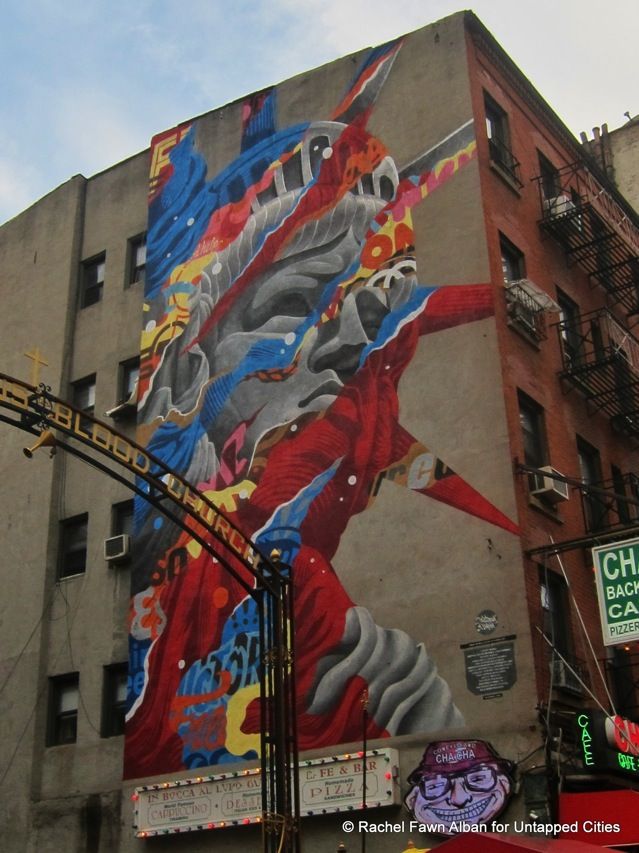
UC: How has the community responded?
Wayne Rada: Overall, the community has responded very well and they are really happy with us. We are bringing people down there to look at the art, which helps the businesses and the restaurants. We also work with the merchants to create and promote their websites. Meanwhile, the merchants are giving something back to the community by making a cultural contribution–by allowing the artists to create new works and beautify the streets. Also, we make a point of supporting local businesses in everything we do, from the places we eat, to the paints that we purchase at stores like Lowbrow and Scrap Yard. So, every step of the way, we are always about building community. We have to jump hurdles and navigate systems and put in the work, just like any mural arts program. If this doesn’t bring some good for the community, why bother?
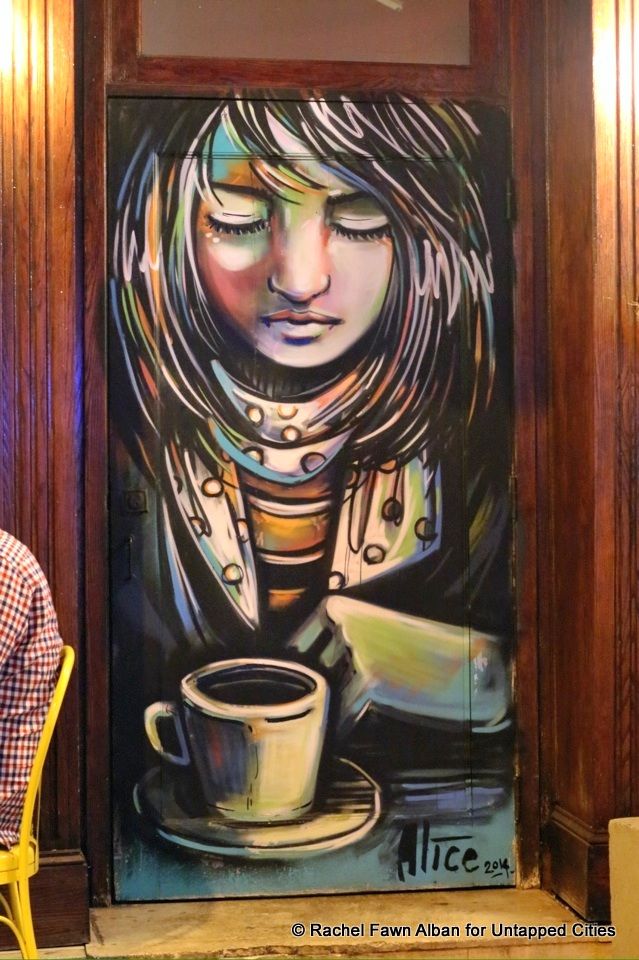
UC: What are the challenges as a curator in this kind of program?
Wayne Rada: There are always going to be some people that don’t like certain works of art but that happens with anything. We have to be sensitive to the tastes of the residents and the merchants in the neighborhood. Our pieces have to be accessible to them and family friendly, and they need to have a “wow factor.”


UC: Speaking of residents’ tastes, L.I.S.A. recently sponsored a mural that was deemed “too graffiti” for the neighborhood and therefore had to be buffed.
Wayne: Yes, the wall by Mint & Serf. It was a bombed out wall, covered with graffiti, and we got complaints right away. I thought that wall was fantastic but we only got a few days out of it… less than a week. Although that limited many from seeing it in person, at least we have the photos and documentation online. Still it was a damn shame. It will be good to have Solus there. His work about fighting the good fight and being the underdog.

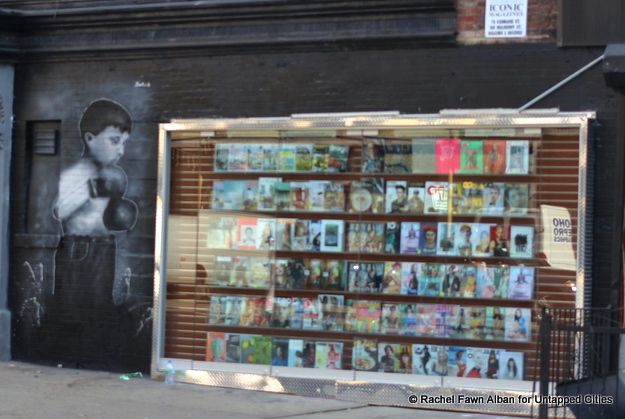
UC: It’s not painted black under there? So, someday someone might remove the magazine case and discover all that graffiti? I wonder what they will think!
Wayne Rada: Yes! They might discover it after we are gone and no one will remember the real story… They might think they discovered a rare graffiti artifact from the 80s or 90s!
UC: Amazing! Who knows, maybe there will a fight for preservation!
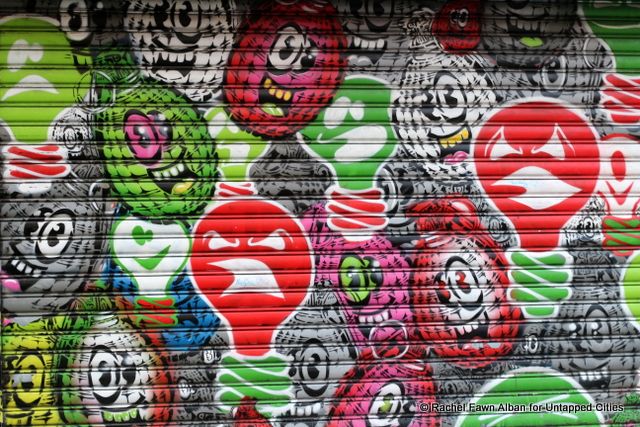
UC: So, do you support letter-based graffiti in addition to the murals and street art?
Wayne Rada: I think it is important to remember where we came from–to know your roots and history. It’s just like how I learned comedy. When I was a kid, I used to stay up all night, watching the classic comedies. Everything today is built upon those classics, and I carried that with me when I was doing comedy. Street art was borne from the graffiti movement and we have to give it respect.
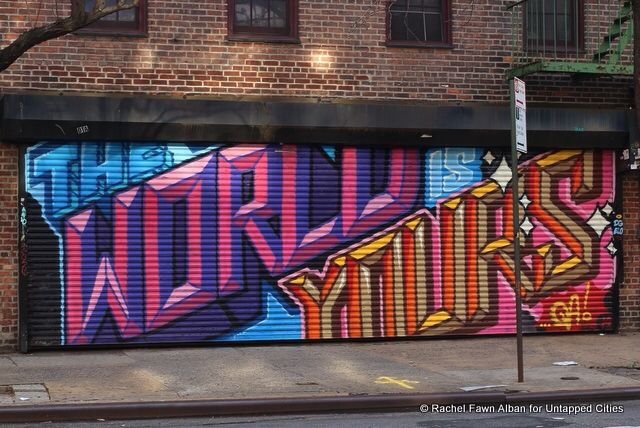
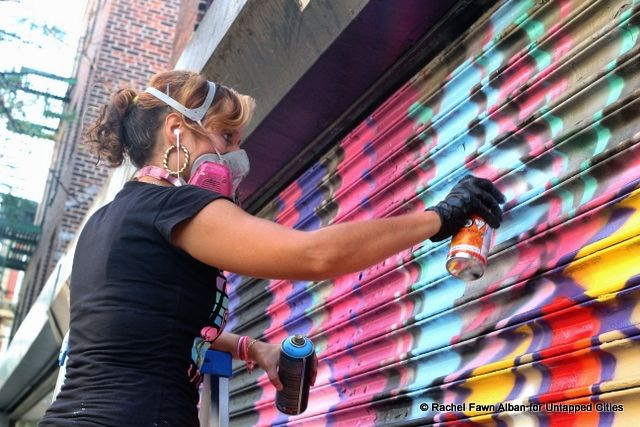
UC: So, what’s coming up in the future for The L.I.S.A. Project?
Wayne Rada: We presently have about 40 walls and continue to expand. While we started just on a few blocks in Little Italy, we now have walls farther north and in the East Village. Soon, we will be taking over some walls in Bushwick, Brooklyn too. Another exciting project is our upcoming mural collaboration with The Museum of the City of New York and Sean Corcoran, curator of the City as Canvas exhibit. The mural will be painted by two artists featured in that exhibit: Crash and Daze. We are also very excited to be working on next year’s Lower Manhattan International Arts Festival, which will be in June 2015.

Wayne Rada: As the project founder and curator, I am nothing without my team: Rey Rosa Jr. who is our photographer, webmaster, and social media director, and RJ Rushmore, Co-Curator and Artist Liaison. It is our job to make Little Italy and the downtown area the first mural district in Manhattan. We are taking the steps necessary to build the L.I.S.A. Project to last – so that we can continue to expand and so that we are the best at what we do.
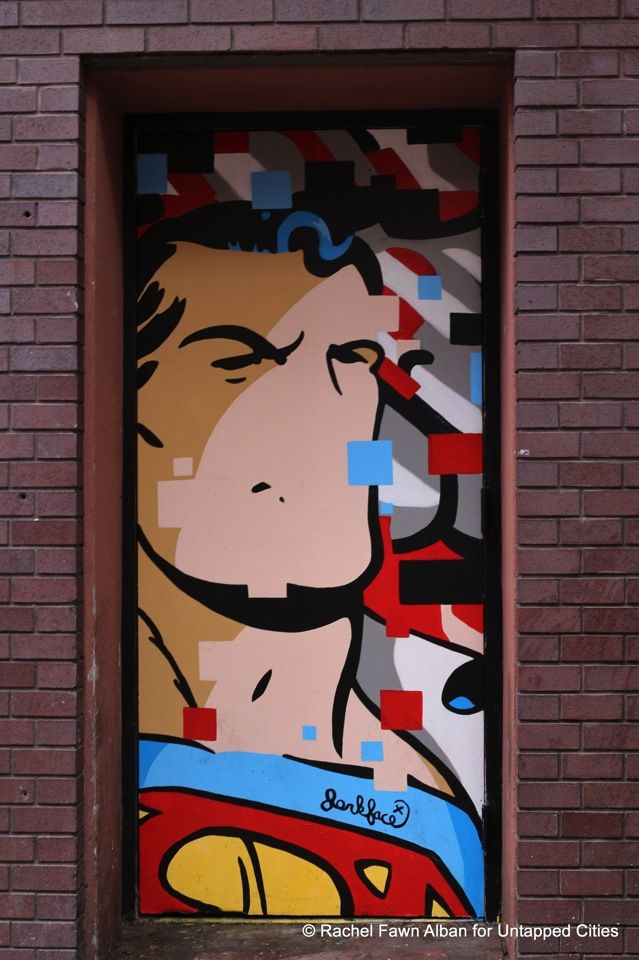
For more on The L.I.S.A. Project NYC, check out their website and take a stroll around Little Italy to check out these works in person, and many more.
Get in touch with the author at Rachel Fawn Alban and follow her on instagram.
Subscribe to our newsletter